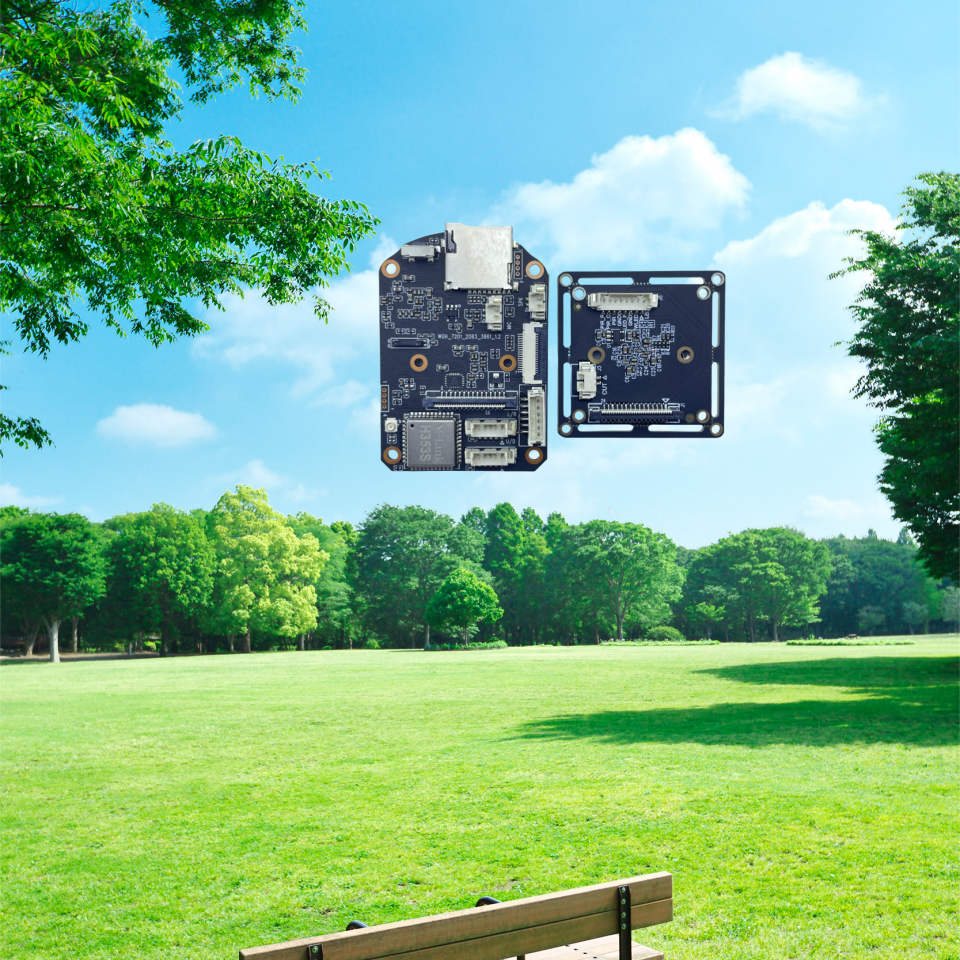
The development of surveillance cameras resembles a splendid epic of technological iteration, gradually transitioning from the early era of analog devices to the new era of digital network cameras, and now to the widespread application of low power cameras. Each step of this evolution closely follows the solid pace of technological advancement.
In the era of analog devices, surveillance cameras were limited by technological bottlenecks, with relatively basic image quality and functionality. With the vigorous development of digital technology, digital network cameras emerged, quickly becoming mainstream in the market due to their high-definition image quality, remote monitoring, intelligent AI algorithms, and flexible network access capabilities, opening a new chapter in the field of surveillance.
Today, low power cameras, as another milestone of technological innovation, are leading a new trend in the surveillance industry. These cameras not only inherit the high-definition and intelligent characteristics of digital network cameras but also achieve significant breakthroughs in power consumption control, boasting advantages such as low energy consumption, strong endurance, and environmental friendliness. Their emergence has not only greatly reduced the operational costs of surveillance systems but also significantly broadened the application scenarios of surveillance cameras, especially in situations with limited power supply or a pursuit of green energy efficiency, where low power cameras demonstrate unparalleled superiority.
This series of developments and changes profoundly reflects the foundational support and core importance of low power design in the field of surveillance cameras. It is not only an inevitable product of technological progress but also a key force driving continuous innovation in the surveillance industry and moving towards the future.
Today, let us delve into the foundational world of low power design and explore why it is so important.
Clearing the Fog: Understanding the Basics of Low Power Design
Low power design, in simple terms, is the application of a series of technical means and design concepts to minimize energy consumption while ensuring the normal functionality and performance of network camera devices. This is not a simple task; it involves comprehensive considerations at the hardware, software, and system levels.
From a hardware perspective, the choice of each component is crucial.
Take the main control processor, for example; it is the device’s “brain”, and different processors have vastly different power consumption and performance. Low power processors utilize advanced manufacturing processes and architectural designs, allowing them to perform calculations with lower energy loss while executing tasks.
The image sensor, as the device’s “sensory organ”, also needs to be carefully selected. High-sensitivity, low-noise, and low-power sensors can accurately capture external information while reducing unnecessary energy consumption.
Additionally, the power management chip acts like a savvy “butler”, intelligently allocating and managing electrical energy to ensure that each component receives the appropriate power supply when needed, avoiding energy waste.
In the tightly integrated system of network cameras and their accompanying APP, the network chip plays a crucial role as a “communicator”. While other hardware components may be able to “rest” in specific situations, the network chip must always operate efficiently to ensure real-time, stable, and smooth data interaction between the camera and the APP. This continuous operation mode makes the network chip a significant energy consumer in the entire system. Therefore, in the design phase of the network chip, low power design has become an essential consideration that cannot be ignored.
The software layer also has significant potential. By optimizing the code of the operating system and applications, and reducing unnecessary calculations and data processing, the power consumption of the device can be significantly reduced. For example, setting appropriate task priorities and scheduling strategies allows the device to enter low power mode when idle and quickly resume efficient operation when needed. Additionally, using efficient algorithms and data structures can reduce energy consumption during data transmission and storage processes.
The system level requires a comprehensive consideration of the collaborative work between hardware and software. Reasonable circuit design can reduce energy loss during signal transmission, and optimizing heat dissipation design can improve the energy utilization efficiency of the device. Furthermore, intelligent network communication protocols can reduce the amount of data transmitted between devices, thereby lowering power consumption.
Insights into Why Low Power Design is Crucial
Extending Device Endurance, Enhancing User Experience
For battery-powered network cameras, low power design directly determines the device’s endurance time. Imagine if the network camera you placed outdoors needed to be charged every few hours, or else it would run out of power; this would bring great inconvenience to life. Low power design allows the device to operate longer on a single charge, enabling users to enjoy the convenience brought by technology without frequent recharging.
Meeting Environmental Standards, Promoting Sustainable Development
In the global context of advocating energy conservation, emission reduction, and green development, low power design has significant environmental implications. Reducing the power consumption of electronic devices means less demand for energy, thereby reducing pressure on the environment. Additionally, reducing the use and disposal of batteries helps minimize electronic waste, protecting our planet.
Enhancing Device Reliability, Extending Lifespan
High power consumption often leads to high heat generation, and excessive temperatures can damage electronic components, reducing device reliability and lifespan. Low power design can effectively reduce the heat generated by devices, lowering the operating temperature of components, thereby improving device stability and reliability, and extending the lifespan of the device.
Low power design is an inevitable trend in the development of network cameras. It concerns not only the performance and user experience of the device but also economic benefits, environmental protection, and sustainable development. Whether hardware engineers, software developers, or product designers, all should fully recognize the importance of low power design and integrate it throughout the product development process.
In the next issue, we will continue discussing the hardware design of low power modules.
Follow us for more exciting content.
Haixin Weishi uses technology to safeguard every moment of safety and beauty.